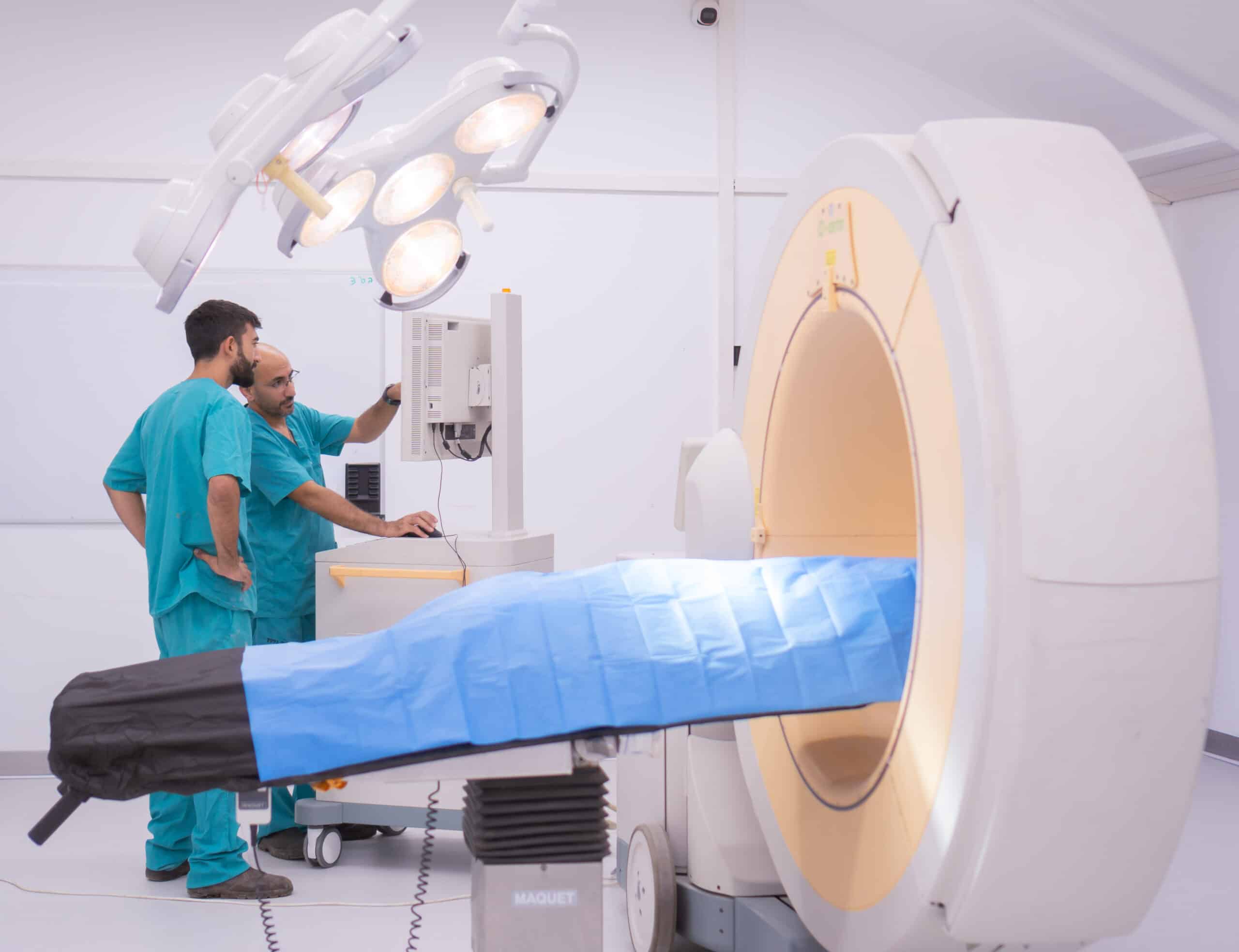Ever wondered what a tightrope walker feels like? That’s the life of MEDICAL DEVICE CLINICAL TRIALS. Balancing on the thin line between innovation and safety, these trials are where science takes a leap into the unknown. Think about it – every pacemaker, stent, or MRI machine once hung in that balance.
Imagine holding your breath as you watch pioneers venture onto this high wire; with each step forward in device clinical trials, they pave new ground for medical marvels. It’s here we find out if those devices can truly dance to the rhythm of our bodies’ needs.
What will you discover by delving deeper?
The heartbeat of progress thrums through these pages—stories untold until now about investigational devices tiptoeing toward FDA approval. And just around the corner… well, let’s save some surprises for later.
The Stages of Medical Device Clinical Trials
Ever wondered how that high-tech pacemaker made its way to your grandpa’s heart? It all starts with a journey through the rigorous stages of medical device clinical trials. These stages are not just checkboxes but lifelines ensuring every beep in grandpa’s chest is safe and effective.
Exploratory Studies in Early Development
In the world of medical devices, starting off on the right foot means everything. Phase 0 kicks things off—though it’s more like dipping your toes before taking the plunge. Here, investigators ask: “Does this thing have potential?” They’re looking for early signs that the device won’t cause harm and might actually work—the proverbial green light for further testing.
Moving up to Phase 1, researchers turn their focus to safety (but let’s be real—they’re always eyeing safety). With human subjects now part of the equation, it’s about making sure no one gets an unexpected shock—literally or figuratively—from newfangled gadgets like hypodermic needles or dental fillings.
Pivotal Studies for Regulatory Approval
We’ve arrived at Phases 2 and 3 where things get serious—and seriously scrutinized. Think of these phases as proving grounds where hopeful devices face tough love from investigating researchers determined to gather scientific evidence that screams “safe” and “effective.” This is when a pivotal study can make or break FDA approval hopes because here lies proof positive—or negative—for each innovation’s claims.
Post-Market Studies for Long-Term Effectiveness
Cue Phase 4; after conquering regulatory hurdles, newly minted medical marvels enter post-market surveillance—a fancy term meaning we watch ’em closely even after they hit store shelves (or hospitals). Why? Because sometimes issues pop up only after prolonged use by Joe Public. It’s about keeping tabs on long-term effectiveness while staying alert for any adverse events—an ongoing commitment beyond initial victory laps around regulatory tracks.
To stay updated on fresh developments straight outta R&D labs into trial zones, ClinicalTrials.gov keeps you informed. And remember: today’s investigational gadget could be tomorrow’s life-saving wonder.
Classifications and Regulatory Pathways for Medical Devices
Ever wonder why a band-aid is easier to get than a pacemaker? It’s all about risk. The FDA sorts medical devices into three regulatory classes based on how much they could potentially harm you if something goes wrong. Compare it to the contrast between a feather and an aircraft.
Now, class I devices are your everyday items—think wheelchairs and dental floss. They’re low-risk, so the FDA says “Go ahead” with minimal fuss. Class IIa devices start upping the ante with things like hypodermic needles—they need more scrutiny but not full-blown panic mode yet.
Moving up to class IIb, we’re talking higher stakes—like surgical lasers that could really ruin your day if they malfunctioned during operation theater karaoke night. These gadgets undergo rigorous testing because nobody wants their insides sunge while belting out ‘I Will Survive.’ Finally, there’s class III: these are your blockbuster medical marvels; artificial hearts, brain implants—the stuff of sci-fi turning real-life heroics which require clinical trials before hitting hospital shelves.
If you’ve got questions or just want to see what new gizmo might one day save your bacon—or even replace it—check out ClinicalTrials.gov. This place lists all ongoing adventures in device land where investigating researchers strive to make tomorrow’s health care safer today.
Ethical Considerations in Medical Device Trials
Ethics are an essential element of protecting patients during medical device clinical trials (MDCTs); they can be likened to the sustenance at a buffet. Imagine you’re at a buffet, but instead of food, it’s filled with ethical standards—yeah, that’s how important they are. The IRB serves as the guardian of ethics for MDCTs, ensuring that patient safety is not compromised.
Institutional Review Board Approval Process
The IRB doesn’t play around. It takes protecting human subjects seriously by scrutinizing every detail of MDCTs before giving the green light. ClinicalTrials.gov is chock-full of examples where IRBs have made sure that only studies with solid informed consent and participant protections get off the ground.
This isn’t just about ticking boxes—it’s about ensuring participants fully understand what they’re getting into. And let me tell ya, without an enthusiastic nod from these guardians of good practice, your trial might as well be a car without gas – going nowhere fast.
You’ve got to admire their commitment though; when everyone is on board with ethical considerations like protection of human subjects and informed consent procedures in place – we can all sleep better at night knowing our MDCTs are not only legit but also respect each individual involved.
Comparing Device Trials to Drug Trials
Think of medical device trials as the mavericks of the R&D world, dancing to a different beat than drug trials. For starters, while drugs typically go through a linear progression—Phase 0 through Phase 4—medical devices shimmy along a path that’s not quite so straightforward. For Class IIA or IIB medical devices such as hypodermic needles, the FDA approval process involves a particular set of complex steps.
In fact, with clinical investigations for these tech wonders, we’re often talking more rigorous testing and specific interventions designed for human subjects right out of the gate. Unlike drug administration where doses can be tweaked here and there in early phases, device clinical trials have this knack for needing near-final designs from day one—which is no small feat. Bringing on a challenge is something to look forward to.
Digging deeper into pivotal studies needed for regulatory green lights shows us that investigating researchers must tango with unique challenges like how invasive medical devices interact over time with our bodies—because nobody wants an unexpected cha-cha line at their next check-up. So remember those stats about three regulatory classes? They’re vital moves in this intricate dance towards market readiness. If you want more juicy details on ongoing adventures in MDCTs head over to ClinicalTrials.gov. There’s always something new stepping onto the floor.
Future Innovations Impacting Medical Device Trials
As we gaze into the crystal ball of medical device clinical trials (MDCTs), it’s clear that digital health and remote monitoring are set to revolutionize the game. Imagine a world where investigational devices no longer need patients to stay in clinics for observation because wearable tech keeps an eye on them from afar. This isn’t sci-fi; it’s the future knocking at our door.
Tech advancements aren’t just cool gadgets; they’re pivotal in pipeline exploration clinical trials. They give us real-time data, making trial phases—from exploratory studies to post-market surveillance—smarter and more efficient. And let’s not forget about digital platforms that could make Phase 0 through Phase 4 as smooth as butter, improving how we gather scientific evidence every step of the way.
But there’s more than just convenience at stake here. Digital innovations promise better patient safety too, by enabling quicker responses to any adverse events. The FDA knows this dance well—they’ve seen all kinds of devices come across their desk for approval, from wheelchairs to hypodermic needles—and they’re keen on using technology that enhances oversight without compromising rigor or ethics.
If you’re itching for more intel on these futuristic MDCTs or want a sneak peek at what new trials are underway, check out ClinicalTrials.gov. Stay informed is your best bet in navigating this fast-evolving landscape.
Conclusion
Tiptoeing the high wire is challenging, yet you just saw what it requires. MEDICAL DEVICE CLINICAL TRIALS guide devices from concept to cure with rigorous testing and ethical oversight.
Dive deep into phases; remember those: exploratory, pivotal, post-market. They’re your map through uncharted waters of development and approval.
Know the classes—Class I to III—and how they shape a device’s journey toward FDA green lights. It’s not just about risk; it’s about precision in matching regulation to innovation.
Honor ethics at every step. From IRB approvals to informed consent—it’s all about respect for human subjects while reaching for scientific breakthroughs.
Embrace tomorrow today! Advancements loom on the horizon that will transform trials once more—but always grounded in safety and efficacy first.
To Know more about biotech farm services click here





